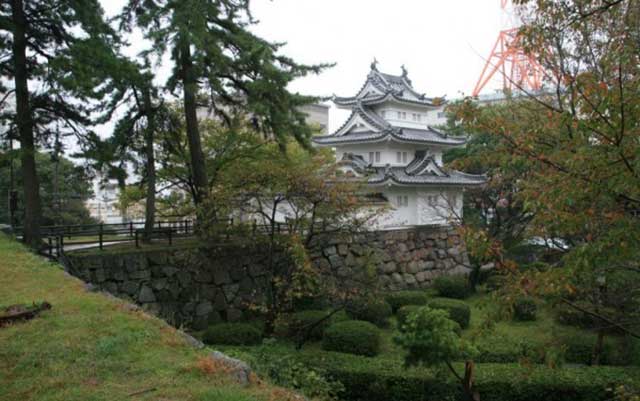
Tsu Castle, located in Tsu City, Mie Prefecture, was originally built by Hosono Fujiatsu in 1558 and was known as Anotsu Castle, named after the old region. The site was strategically chosen at the confluence of the Ano and Iwata Rivers, which naturally formed a moat around the castle, while the nearby port served as a vital trade route.
The castle, as it is now known, was established by Oda Nobukane, the younger brother of Oda Nobunaga, as a strategic base for the Oda clan's expansion into the Ise Peninsula. Nobukane constructed an impressive complex featuring the Honmaru, Ni-no-Maru, and San-no-Maru baileys, along with a five-story keep and a smaller sub-keep. In 1595, he handed control to the Tomita Clan, who held it for only five years.
During the Battle of Sekigahara in 1600, Tomita Nobuhiro and his 1,300 samurai defended Tsu Castle against a combined force of 30,000 Western allies led by Mori Terumoto and Chosokabe Morichika. The castle was largely destroyed by fire. Despite the destruction, the Tomita were rewarded by Tokugawa Ieyasu and began reconstructing the castle until their transfer to Uwajima in 1608. Tsu Castle was then entrusted to Todo Takatora, a master castle architect.
Instead of restoring the original five-story keep, Takatora built two simpler, three-story yagura watchtowers, connected by single-story tamon-yagura that encircled the Honmaru. The castle featured two main masugata gate systems and was flanked by the Higashi-Maru and Nishi-no-Maru baileys, with the grand Ni-no-Maru Palace in the western section.
The decision not to rebuild an elaborate keep was influenced by the Tokugawa Shogunate's laws restricting castle expansions to prevent further conflicts. Additionally, Takatora, who had initially sided with the West at Sekigahara, likely avoided raising suspicions with his new ally, the shogun.
Takatora's descendants ruled Tsu Castle for 263 years until Japan's feudal system was abolished in 1871, leading to the castle's demolition. A corner yagura was reconstructed in concrete in 1958, with enhanced gables for aesthetic appeal.
See also
-
Aizu-Wakamatsu Castle
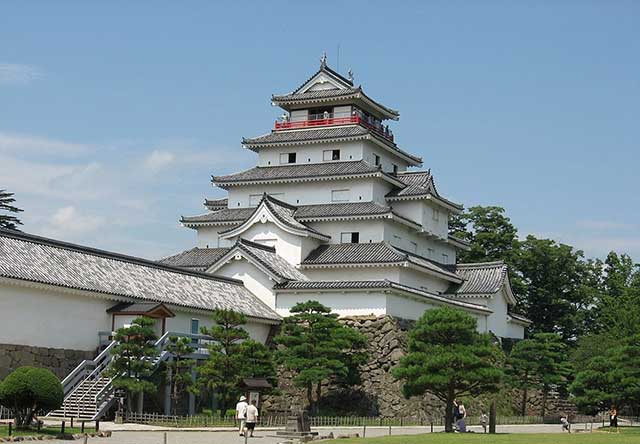
Aizu-Wakamatsu is the most powerful and at the same time the oldest castle in the Tōhoku region in the north of Honshu Island. Its history begins in the 14th century and is closely connected with the Ashina clan, whose members claimed descent from the legendary Taira family.
-
Maruoka Castle
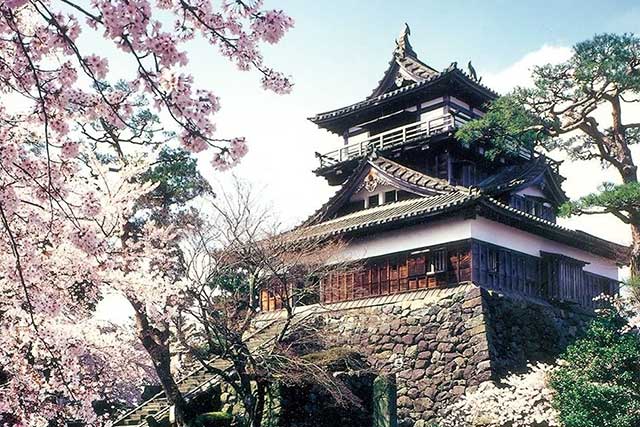
Maruoka Castle is located in the central part of the former city of Maruoka, which is now part of the city of Sakai. This area lies in the northeastern part of Fukui Prefecture. The castle was built on the bank of the Kuzuryu River, on the side opposite Fukui City, which once served as the administrative center of the former Echizen Province. Thanks to its location, Maruoka held significant strategic importance, as it controlled two major routes at once: the Hokurikudo highway leading from Kaga Province and the Mino Kaido road connecting these lands with Mino Province.
-
Marugame Castle
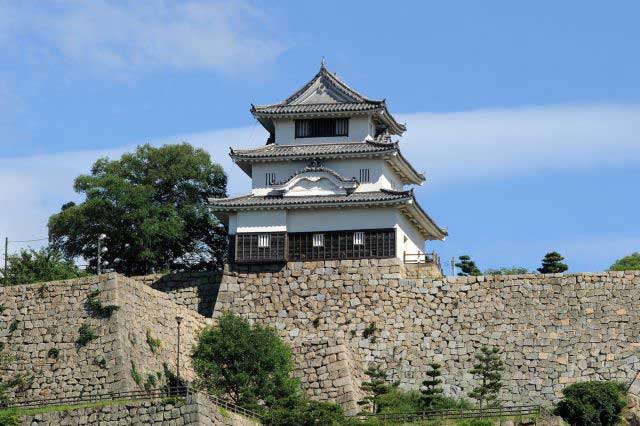
Marugame is part of the so-called “Authentic Dozen,” a group of twelve castles whose donjons have survived to the present day without major reconstructions since the Edo period.
-
Iyo Matsuyama Castle
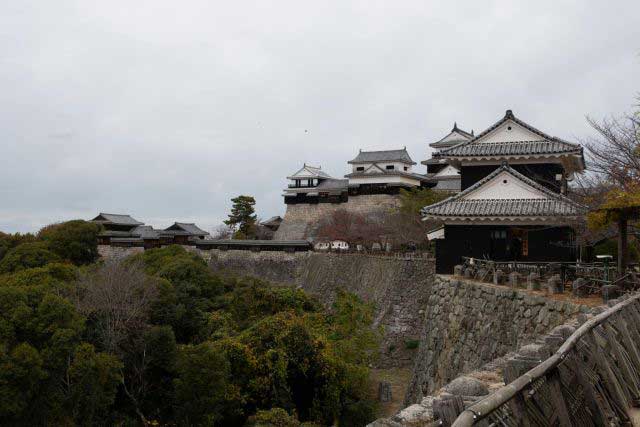
Historically, the center of Iyo Province—corresponding to today’s Ehime Prefecture on the island of Shikoku—was the city of Imabari, while the Matsuyama area was regarded as an agricultural hinterland with broad plains and low hills. During the Muromachi period, the central part of the province was governed by the Kano clan from Yuzuki Castle. With the onset of the Sengoku period, however, this clan lost its former influence and was forced to survive in the shadow of the more powerful Mori and Chōsokabe clans. After Toyotomi Hideyoshi’s forces conquered Shikoku in 1587, the northern part of Iyo Province was granted to Fukushima Masanori, one of the so-called “Seven Spears of Shizugatake.” In 1595, Masanori was transferred to Kiyosu Castle, and the lands around Matsuyama were given to another of the Seven Spears, Katō Yoshiaki, who received Masaki Castle and an income of 60,000 koku of rice.
-
Kanazawa Castle
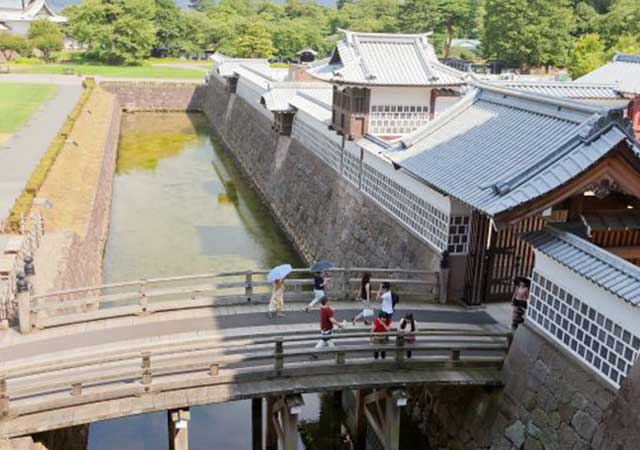
Construction of Kanazawa Castle began in 1580 on the orders of Sakuma Morimasa, a vassal of Oda Nobunaga. The castle was built on the site of the Ikko-ikki sect's Oyama Gobo temple, which is why it is sometimes called Oyama Castle. Morimasa managed to build several moats and begin construction of a castle town. However, after his defeat at the Battle of Shizugatake in 1583, he was executed, and ownership of the castle passed to Maeda Toshiie (1538–1599).
-
Nakatsu Castle
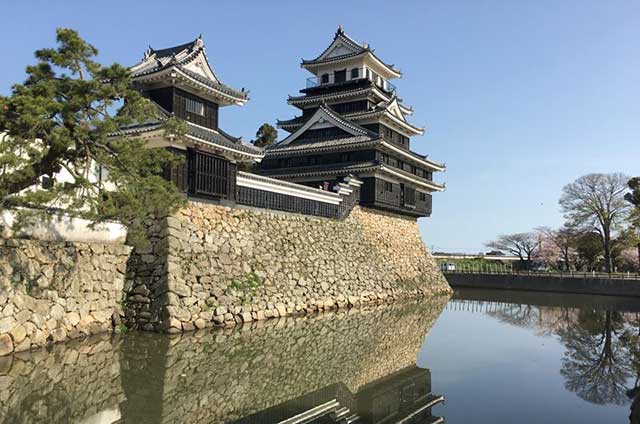
Kuroda Yoshitaka (1546–1604) was one of the closest advisors to the legendary military commander Toyotomi Hideyoshi. He took part in key military campaigns of the late 16th century, including the campaign against Shikoku in 1585 and the campaign against Kyushu in 1587. Later, during the second campaign in Korea, Yoshitaka served as chief advisor to the commander of the invasion forces, Kobayakawa Hideaki. After Hideyoshi's death, he swore allegiance to Tokugawa Ieyasu, thereby securing his influence and patronage under Japan's new leader.
-
Edo Castle
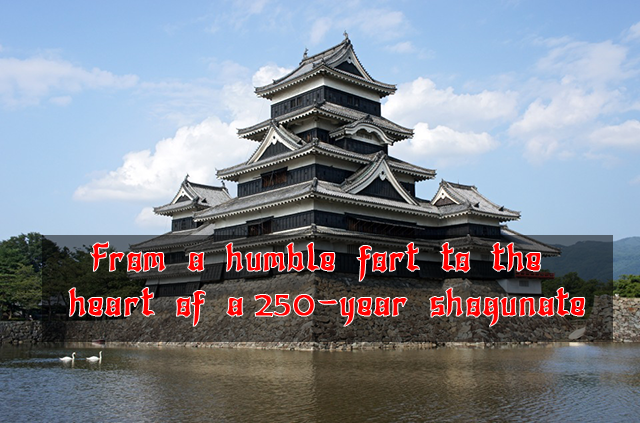
The history of Edo Castle dates back to the Heian period, when the Edo clan built a small fort on this site. In 1457, the vassal of the Uesugi clan, Ota Dokan (1432–1486), constructed a full-scale castle here. Internal conflicts weakened the Uesugi clan, and in 1524, Ota Dokan’s grandson, Ota Yasutaka, surrendered the castle without resistance to the forces of Hojo Soun, the ambitious leader of the Hojo clan. While Odawara Castle remained the clan's main stronghold, Edo was considered a key strategic fortress.
-
Samurai Museum Shinjuku
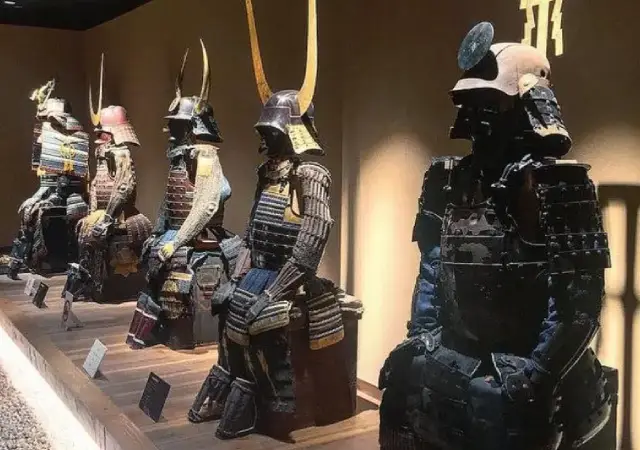
Situated in the vibrant district of Shinjuku, the museum showcases an extensive collection of samurai armor, weapons, and cultural artifacts spanning from the Kamakura to the Edo period. The exhibits aim to convey the samurai's unwavering commitment to honor and discipline, reflecting how their spirit continues to influence modern Japanese culture.

